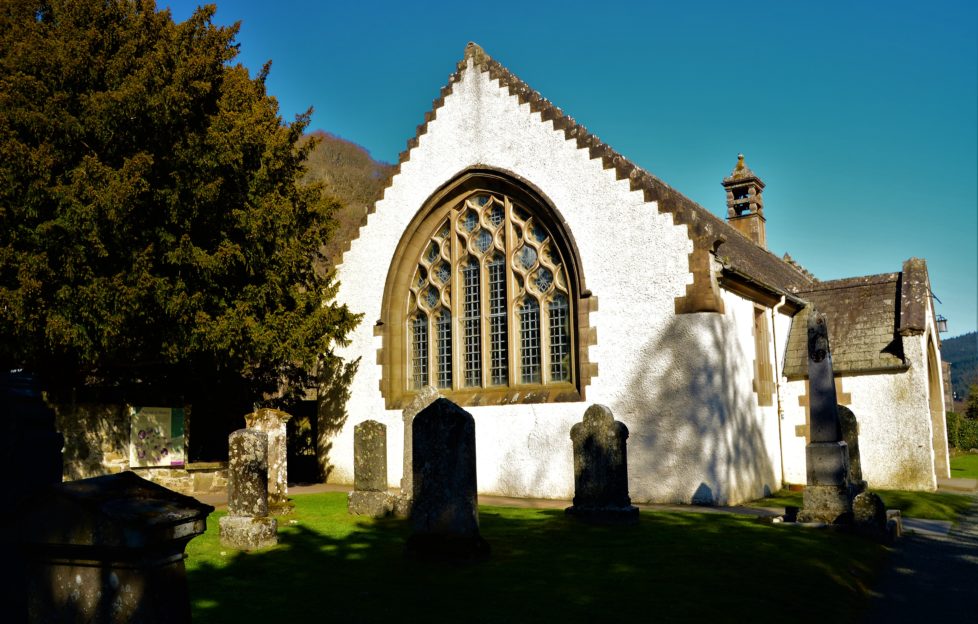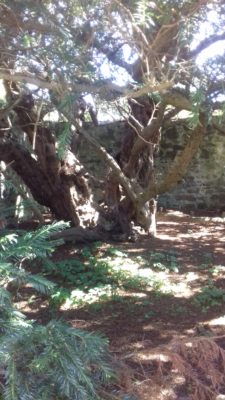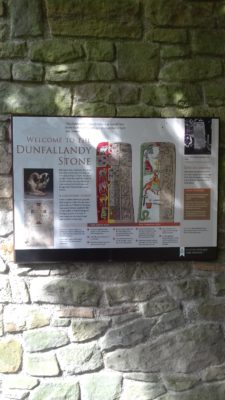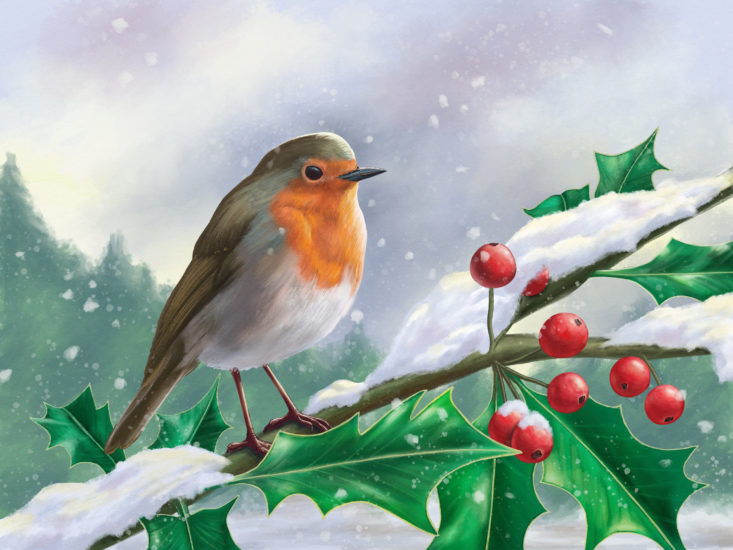
Eight miles west of Aberfeldy is the Perthshire village of Fortingall. Here, in a quiet churchyard, you can find the Fortingall Yew.
According to the Woodland Trust, this is the oldest tree in the UK. It’s also one of Europe’s oldest trees, and one of the oldest living things on Earth.
Just how old is it?
When it was measured all the way back in 1769, the circumference of the tree’s trunk was over 50 feet in diameter. This suggested an age of around 5,000 years.
Recent estimates indicate two or three thousand years old as perhaps being more accurate.
The circumference has been greatly reduced by souvenir-hunters and bonfires back in the day, but markers are in place where the trunk once stood, to give you an impression of how it once looked.
The trunk has actually split into several parts, giving the impression of lots of little trees, rather than one huge one!

The legend of Pilate’s birth
According to local legend, Biblical figure Pontius Pilate was born in the shadow of the yew. Other stories say he played in its shadow.
The Shakespeare connection
Yew needles are dangerously toxic, and can prove fatal if ingested. Shakespeare was surely aware of this, as one of the ingredients Macbeth’s famous witches add to their cauldron is “slips of yew, silver’d in the moon’s eclipse”.
Why do we find yews in churchyards?
Because of its longevity and ability to regenerate, the yew has been a symbol of death and resurrection since pre-Christian times.
The information provided on the site of the Fortingal Yew has the following to say:
“Before the arrival of Christianity, the yew was known as the ‘tree of eternity’, and it’s easy to see why.
“At about 500 years old – long after most other trees have died – the yew starts to grow again. This ‘otherworldly’ power meant early peoples revered the yew, and the tree marked their places of worship.”

The Dunfallandy Stone
Nearby is the Dunfallandy Stone, a carved Pictish stone thought to be around 1,200 years old.
Like the Fortingall Yew, it once marked a place of prayer, set prominently on the site of a chapel.
To protect it from the Scottish weather, the stone now sits in a display case.
But as you can see from the photos, I’m happy to say that the sun was shining on the day we visited!
To read more from the team, click here for our blog.




